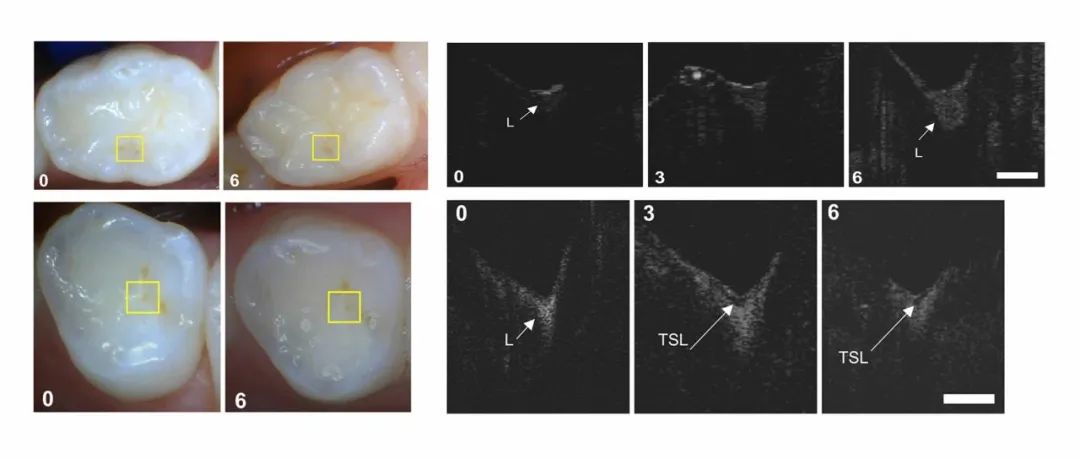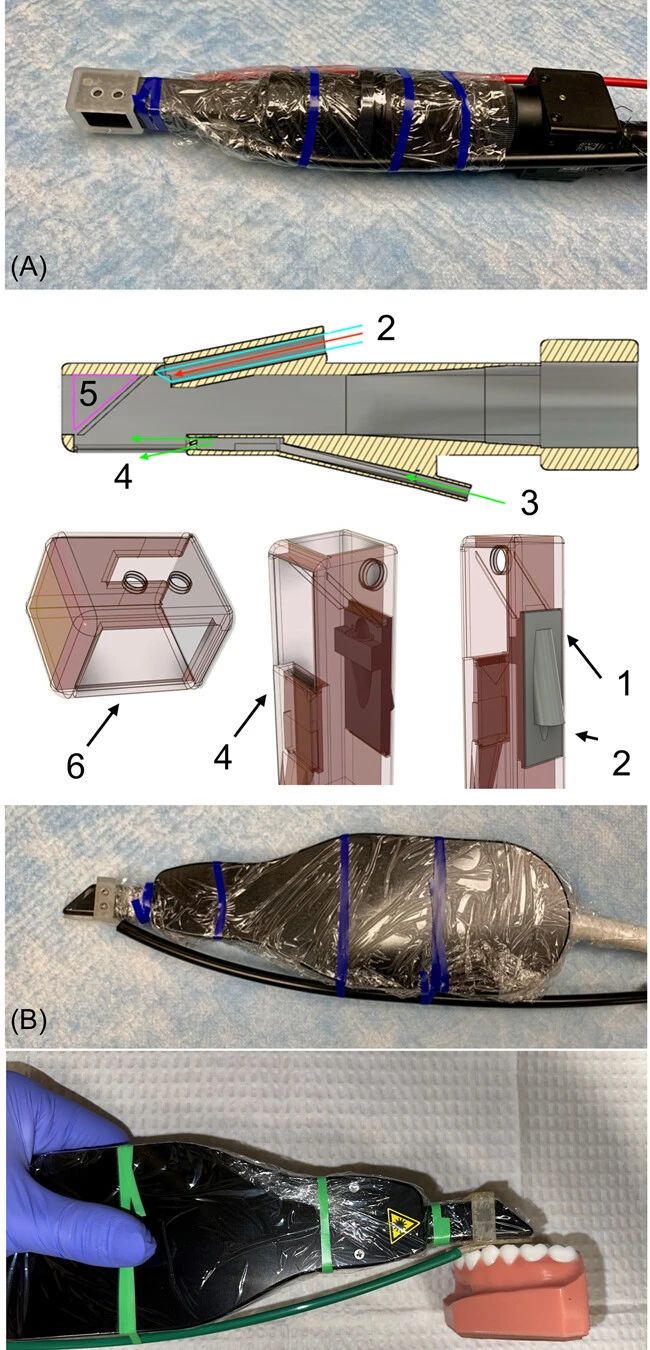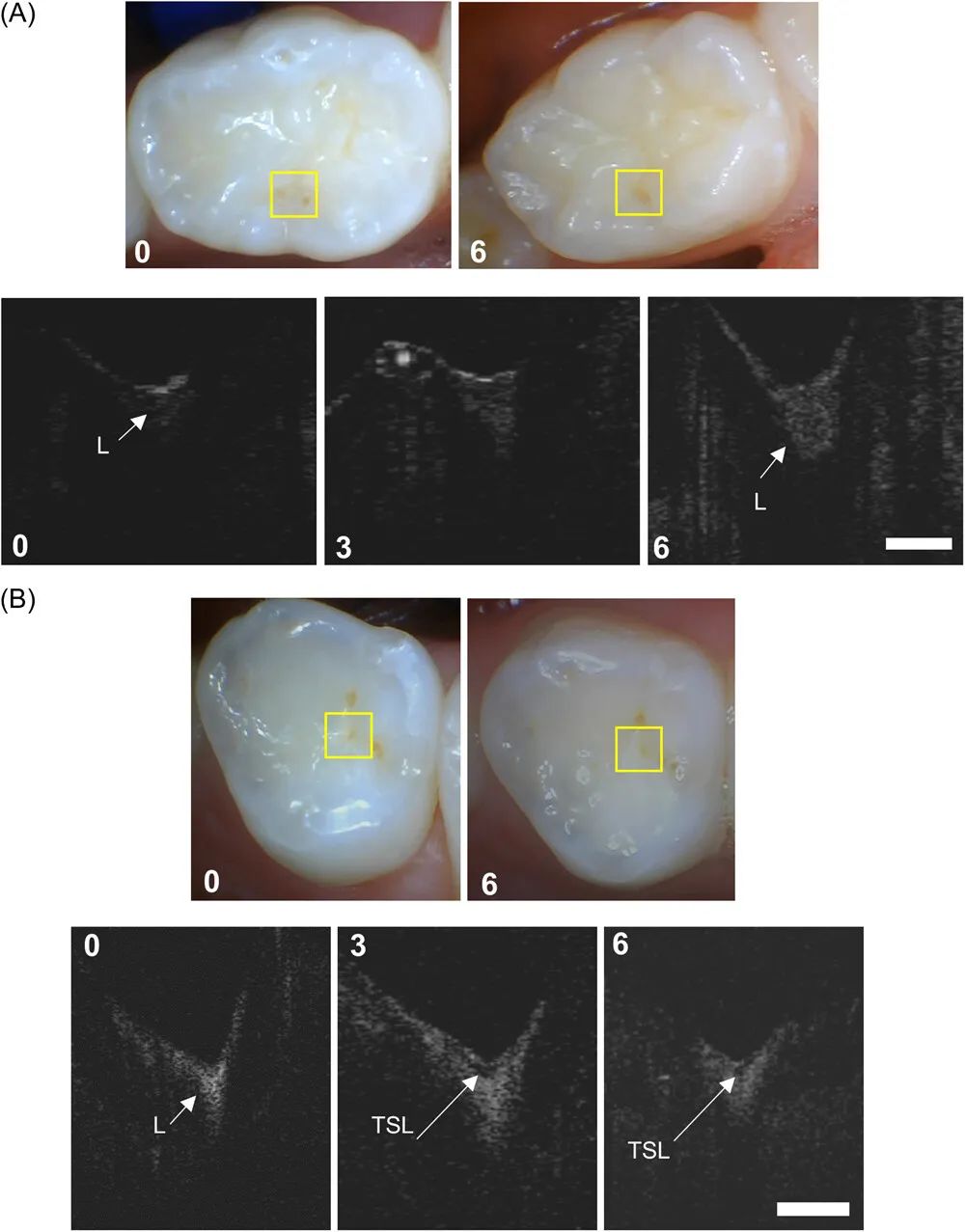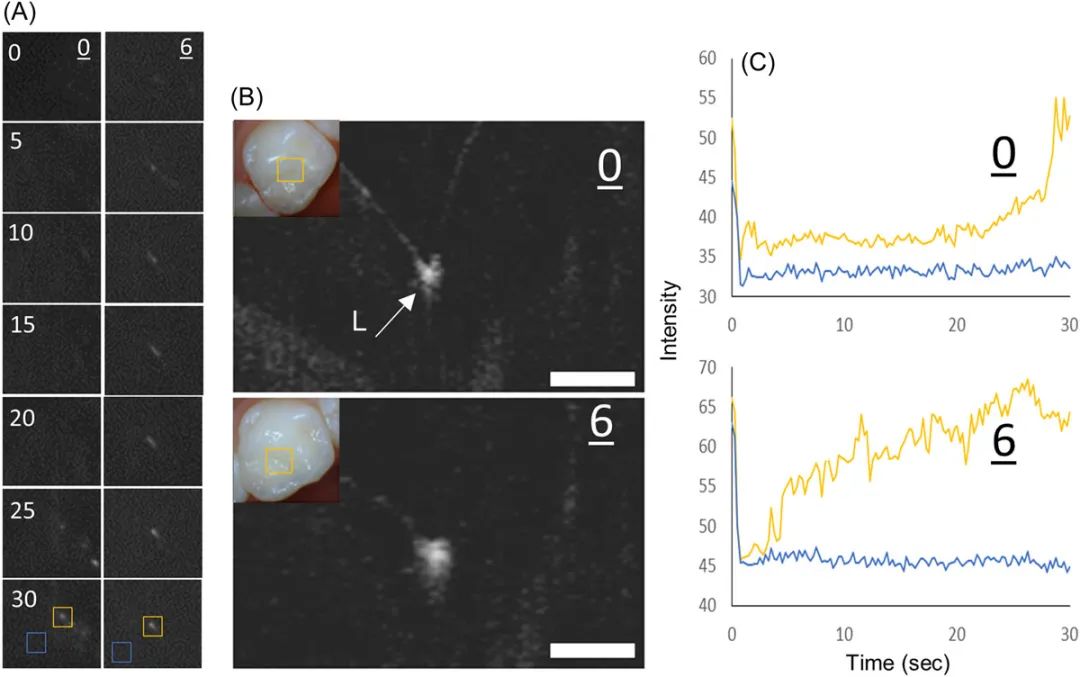BKNIR-II Imaging | CP-OCT and SWIR reflection imaging monitor the mobility of baby tooth lesions
There is a need for new non-destructive diagnostic tools that can assess lesion activity in a single observation and monitor changes in lesion activity over time during nonsurgical intervention. Studies have shown that short-wave infrared (SWIR) imaging methods, such as optical coherence tomography at 1310 nm (OCT) and time-resolved reflection imaging at wavelengths greater than 1400 nm, can be used to evaluate remineralization and lesion activity. Optical coherence tomography can provide high-resolution cross-sectional images of the lesion structure. Polarization-sensitive optical coherence tomography (PS-OCT) and cross-polarized optical coherence tomography (CP-OCT) use the polarization properties of back-reflected light to obtain additional contrast in optical coherence tomography images and reduce interference with strong reflections occurring on the tooth surface. In vivo studies using CP-OCT enable accurate detection of early and severe occlusal lesions that are not visible on X-rays. CP-OCT is able to monitor the remineralization of the tooth surface by detecting the formation of a highly mineralized transparent surface layer (TSL) on the lesion surface and the reduced reflectivity over the combined depth of damage (Δ R) after exposure to the remineralization solution.

The SWIR reflex imaging device and the CP-OCT device were used in this study. An image of a fully assembled SWIR reflection imaging apparatus is shown in FIG. 1A. The device consists of three 3D-printed autoclavable accessories, a 1 mm diameter optical fiber for transmitting SWIR light, an air nozzle, a component consisting of two lenses, and an adjustable aperture connected to a miniature InGaAs camera. The CP-OCT system used in this study was the model IVS-3000-CP purchased from Santec. The image of the CP-OCT handle is shown in Figure 1B, which has been used in a variety of in vivo caries imaging studies.
 Figure 1. (A) Image of the fully assembled SWIR reflection imaging device (B) Image of the CP-OCT handle
Figure 1. (A) Image of the fully assembled SWIR reflection imaging device (B) Image of the CP-OCT handle
Of the 30 subjects recruited, 29 subjects completed the study. Suspected lesions on both teeth were monitored in each subject. Six of the remaining 58 lesions were determined to be intact, as no lesions were found in the CP-OCT images at any time point. An additional 10 lesions were abolished due to the inability to register CP-OCT lesions at all 3 time points, with a CP-OCT sample size of 42 lesions. Color and CP-OCT images taken from two suspected active lesions, where one lesion remained active and developed further in depth and severity, and the other lesion ceased, as shown in Figure 2. The first lesion showed increased damage depth Ld and integral reflectivity Δ R within 6 months with no visible TSL on the surface. The CP-OCT images showed a continuous increase of the lesions in both depth and area over time. In the second lesion example, the TSL was clearly visible at 3 months and after 6 months, and the lesion depth did not appear to increase significantly, indicating its progression from an active state to a stopped state. The color images in Figure 2 show no change in the appearance of both lesions between 0 and 6 months.
 Figure 2. (A) CP-OCT image of suspected active lesion at 0,3 and 6 months indication (B) CP-OCT image of suspected active lesion at 0,3 and 6 months (location of lesion in color image by yellow box)
Figure 2. (A) CP-OCT image of suspected active lesion at 0,3 and 6 months indication (B) CP-OCT image of suspected active lesion at 0,3 and 6 months (location of lesion in color image by yellow box)
Three parameters for the 42 lesions were calculated at the three time points for each of the CP-OCT data. Injury depth (Ld), damage reflectance (Δ R), and transparent surface area thickness (TSL). The mean ± SD of each measurement is plotted in Figure 3. During the 6-month period, the mean Ld and Δ R increased significantly at 42 lesions. This suggests that most of the 42 lesions remained active over the 6-month period. During the 3-month period, the mean TSL thickness increased substantially, indicating that some lesions did stop or remain discontinued. At month 6, TSL was evident at 14 of the 42 lesions, indicating lesion cessation. Six of these lesions produced TSL at month 0, all six lesions retained TSL within 6 months, and the mean TSL thickness increased significantly during that period. Eight additional lesions formed a new TSL within 6 months, and the TSL thickness increased significantly in six arrested lesions. Of the 14 lesions with measurable TSL at month 6, all 14 lesions severity (Δ R) decreased from 0 to 6 months.

Figure 3. Measured mean value ± SD plot of lesion depth (Ld), integrated reflectivity (Δ R) at lesion depth, and clear surface area thickness (TSL) at 0,3, and 6 months.(TSL thickness includes only 14 lesions with TSL at 6 months)
SWIR reflectivity images were analyzed at months 0 and 6 months by processing 48 acquired videos, and two parameters were calculated from the obtained time-intensity curve, the change in intensity with drying (Δ I) and the initial delay (DEL) before the reflectivity rise. The 48 SWIR videos were divided into two groups, defined as activity and stop, based on the presence of TSL on the lesion. FIG. 4A shows a timing SWIR image of the matching region of the occlusal surface recorded during 0 and 6 months dry for 30 seconds. As can be seen in Figure 4 B, there is a very small lesion in the occlusal fossa, active at baseline and stopped at 6 months. The distribution of SWIR reflex intensity is shown in Figure 4C, as expected, active lesions (month 0) showed a large delay over 20s before a rapid rise in reflectivity, and block lesions (month 0) showed little delay before a gradual increase in reflectivity.
 Figure 4. (A) SWIR images of 0-30s lesions at 0 and 6 months during drying (lesion area in yellow box, robust area in blue box) (B) images of CP-OCT caveolar lesions at 0 and 6 months (C) curve of SWIR reflection intensity over time
Figure 4. (A) SWIR images of 0-30s lesions at 0 and 6 months during drying (lesion area in yellow box, robust area in blue box) (B) images of CP-OCT caveolar lesions at 0 and 6 months (C) curve of SWIR reflection intensity over time
In summary, this study is the first clinical study to monitor changes in lesion structure and activity over time in primary teeth in vivo using CP-OCT and SWIR imaging, and the first to show differences in dehydration dynamics between active and stalled lesions. This study further confirmed that TSL thickness is a key objective indicator of lesion activity. Visual and tactile indicators (e. g., color and texture) of lesion activity and severity were less reliable. The lesion depth (Ld) and integral reflectivity (Δ R) increased significantly over the 6 months, indicating that most lesions did not stop and actually progressed in severity. In addition, the authors found that the delay in the onset of intensity change (DEL) appeared to be a better indicator of lesion activity than the overall change in intensity (Δ I) in active lesions. This onset delay (DEL) was overlooked in early in vitro studies and was only recently found to be an indicator of lesion activity. Whereas the stalled lesion had an external highly mineralized TSL with minimal fluid between the lesion body and the surface, thus there is a minimal delay before the rise in reflectivity during drying. This initiation delay (DEL) is a good indicator to measure lesion activity in vivo.
Reference Documentation
Zhu, Y.; Kim, J.; Lin, B.; Fried, D., Monitoring lesion activity on primary teeth with CP-OCT and SWIR reflectance imaging. Lasers Surg Med 2023, 55 (6), 601-609.
The original link
https://onlinelibrary.wiley.com/doi/10.1002/lsm.23677#
18915694570
Previous: BK Engineering Bacteri
Next: BK Oncolytic virus pla


